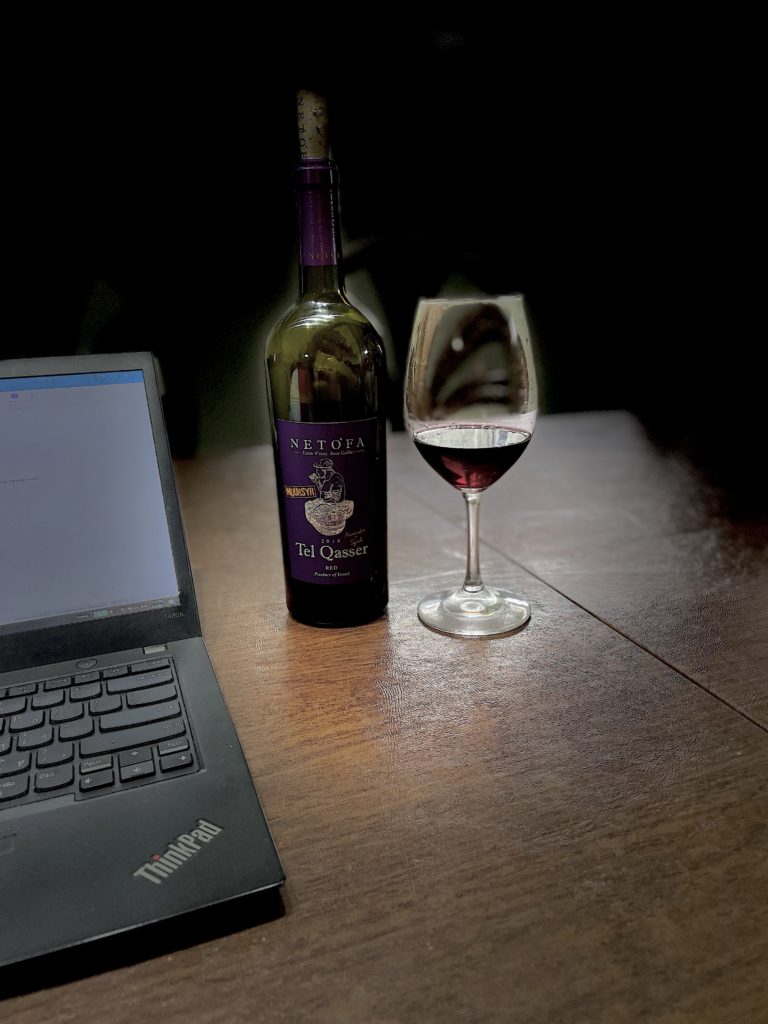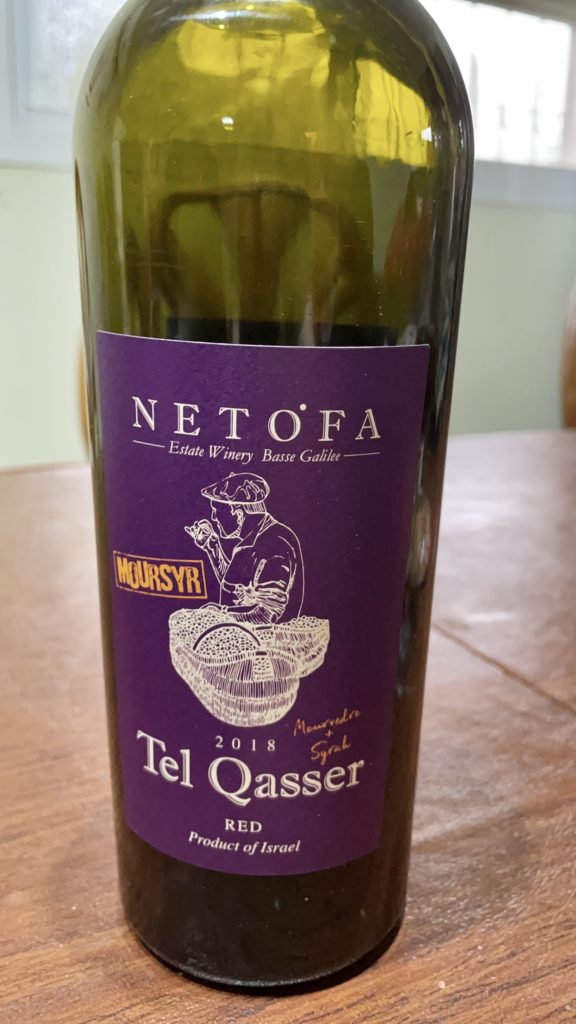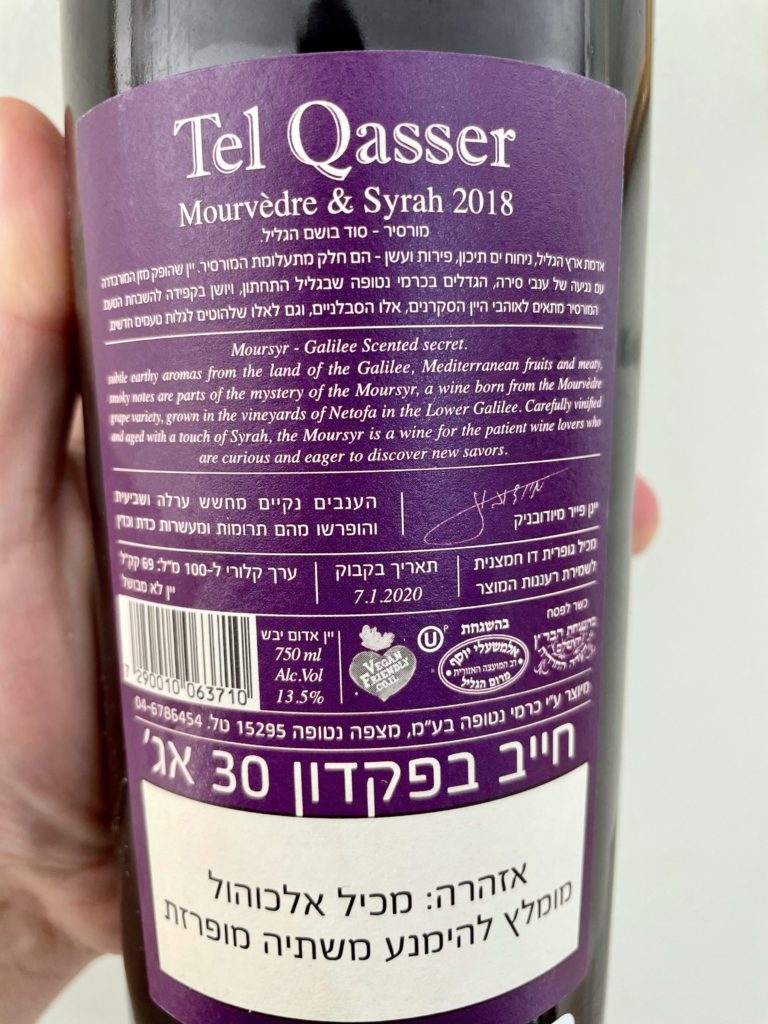
It is no secret that I have been having a hard time putting pen to paper – or fingers to keyboard – since this pandemic started. In fact, as it drags on and on, I find it harder and harder. Again – it’s not like I’m not drinking wine – I am. In fact, like much of the world, my consumption has certainly increased over the course of the year. But, for the most part, I have been sticking to wines that I know and love – this is for two reasons. First – I am not looking to put myself in a position where I have to trash wines or wineries during this pandemic. They are hurting for the most part, and I have no interest in making it worse. Second – while I have a lot of fun tasting wine – I have even more fun talking about wine with people, preferably with a nice meal and few bottles open to debate – but even when tasting through, I prefer to do it with others or at least with the winemaker – rather than alone at home. It’s just less fun – and now is a time where we all could use more fun not less – so if I’m going to drink, it’ll be a bottle that I know at the outset that is going to put me in a good mood.
So when they relaxed the current restrictions and allowed for one on one meetings again, I decided to call a winery that I usually enjoy and see if the winemaker whose company I always enjoy would have time to meet. The winery in question is Netofa, and the winemaker is Pierre Miodownick . Now if you are asking yourself – hey – you just visited Netofa six months ago – yes, it’s true. There are other wineries that I have not visited in a much longer time. Some of them very close to my home and, rest assured, they are on the list, assuming we don’t close down again. But there are few winemakers I enjoy sitting with more than Pierre. Whether talking about Netofa or other wines he is producing in France (I‘m looking at you Cantenac Brown!) or simply the state of the current kosher wine industry in general, few people in the world have as rich a history and depth of understanding as Pierre does. This was evident when we were talking about the 2020 vintage. There was a massive heatwave at the end of August and into September last year. Until then, 2020 was showing signs of a near perfect growing season weather-wise. I have spoken to a number of winemakers. Basically, anyone who didn’t pull early – or who didn’t have the capacity to pull everything they had on the vine within a day or two when the heat came, was left with raisins. Pierre finished picking mid-August, which even for him is really early. I asked him what prompted him to pick? He said that after 39 vintages (!) he gets a feeling in his bones….. Well, I guess we’ll see overall how the 2020’s come out, but what I have tasted so far from Netofa, that experience will pay off in a vintage that will likely have few winners…..
Here are my notes:
Rosés
2020 Domaine Netofa Rosé –A GSM blend with Syrah taking about half and the rest being divided equally between the other components. Excellent Strawberry and acid on the nose – like a sucking candy from when we were kids – I am told there is a tasting descriptor in French called Bonbon Anglaise – this matches perfectly. In the mouth, at first the bottle tasted bottle shocked – and that made sense, it was bottled fairly recently. That made it hard to get a full reading on the wine. Nice strawberry balanced by good acid. There is a clear line between the minerality of the Rosé and the White we tasted a bit later– and the absolute balance between that and the acid. Not in the fruit of course, which is red here and quince there. In any event, this is a wine that I need to taste again in a couple of weeks when it has calmed down.
2020 Latour Netofa Rosé – As always, this wine is 100% Tempranillo (yum!) with pomelo and orange blossom on the nose. In the mouth, more pomelo and maybe some tart raspberry with a nice herbal finish. I have always been a fan and continue to be a fan – it has not had a single disappointing vintage IMHO. Of the 10 or so Rosés I have tasted this season so far, this is the best.
Whites
2020 Domaine Netofa White – As always, this wine is 100% Chenin Blanc with no oak. Let’s get this out of the way – Quince on the nose and in the mouth. Period. No citrus in the mouth at all, which I usually feel I get from the Domaine white. This is the most typical Chenin that I remember the Domaine white ever being. Excellent quince, not overripe at all. The fruit is balanced out by some nice acid. As I mentioned earlier, it’s got some nice slate and minerality running through the wine that pulls it together and make this really fun to drink. This will be an excellent summer wine and is a nice rebound from the slightly sub-par 2019.
2019 Latour Netofa White –My notes here haven’t changed much since I tasted right before bottling six months ago. As soon as it was released I went out and bought more – and then when I was at the winery I bought another six pack. How much more of an endorsement do you need? I won’t retype the whole thing here again – just read the notes – the only difference being that the oak has integrated a bit as predicted. By far the best Latour white that has been released to date – and the best 2019 white I have tasted so far. Do yourself a favor and stock up while you can.
2018 Tel Qasser White – No real change since my last notes here either – so read those now if you haven’t. (Anxiously awaiting the 2019 to see if it lived up to its potential).
Reds
2019 Domaine Netofa Red – Another huge win. I hope this is a sign of things to come for all 2019 reds. This wine is a classic GSM blend with Syrah making up the majority with approximately equal parts Grenaches and Mourvedre for the remainder, aged 10 months in neutral oak. I was wowed by this wine. On the nose it is full on Grenache, with just a hint of spice from the Syrah. The wine is medium bodied with some nice meatiness and dark red and black fruit, some nice earth with a little bit of spice coming in at the end. There is elegance here in the balance as well – which is not a surprise coming from Pierre. The wine is built to drink now but maintains its structure, with just the right amount of acid and enough tannin to hold it together nicely. After our tasting on Wednesday I actually drank the reminder of this wine on Shabbat afternoon and it was fabulous. It’s really all you could want in an everyday wine if you are into old world styled wines. Pierre said it might be his best Domaine to date and has great expectations for 2019 reds in general. If this is a leading indicator, he is absolutely right. Let’s hope….
2018 Tel Qasser Red – This 70% Grenache 30% Syrah blend wine is the wine probably that has changed most since I last tasted with Pierre – and for the better. There was something missing in the mid-palate for me last year – and toasted herbs have moved to fill the hole in the middle and the wine finishes with more tobacco than I remember – though the finish is perhaps also a little shorter than it was previously. Ultimately this is my favorite of the Tel Qassser Reds to date. The profile is far more in line with what I want – ultimately a really nice effort – though if I have to be honest, it is the Netofa wine I least connect with.
2018 Tel Qasser Moursyr – This medium bodied wine is a new addition to the Tel Qasser lineup. Since the demise of the Tinto, Netofa only uses Grenache, Syrah, and Mourvedre for its dry reds. Each of the wines accentuates two or three of the grapes (with the exception of the Dor, which usually focuses on Syrah as a varietal expression). The Domaine uses all three with Syrah being the majority. The Latour uses just Syrah and Mourvedre with a 70/30 split in favor of the Syrah, With Tel Qasser, the script gets flipped and Grenache becomes the star, with Syrah playing the supporting role. This new Tel Qasser takes the other half of the equation and uses Mourvedre as the primary grape (90%) with Syrah added in a small quantity (10%). This wine really is similar to neither the Tel Qasser, with which it shares a name, nor the Latour, with which it shares the same varietals. The nose is all Mourvedre for me and it’s intoxicating – roasted meat and juicy ripe blackberry with a hint of smoke. This is a very refined wine, and while perhaps less French than the Latour in style, it’s certainly not as fruit forward as the Tel Qasser Red usually is, which is what I was expecting due to the name. There is a hint of ripe near sweet red fruit (raspberry) at the start, but that morphs to much darker blackberry with wet mossy earth and roasted meat with a little bit of smoke and a nice dry bakers chocolate finish (which I guess is where the Syrah comes in) . Great acidity and some nice integrated tannin should hold this bottle together for about as long as the regular Tel Qasser. That’s a nice wine that I drank over two days, and it just got better and better as it progressed. I would have let it go longer but I had no more. I really couldn’t stop drinking it. If you can find it, try it (I believe it was made in limited quantities for its initial release).
2018 Latour Netofa Red – Zero change from my previous notes. I got a number of questions about my last post, asking if there was a change in style with the Latour ’18. I guess this is primarily because I noted that the more bitter notes on the finish, which many people associate with Netofa, weren’t present. While I enjoyed those flavors, I don’t think this was a change in style per se – but perhaps a fine tuning of sorts in order to make the wine more appealing to a greater cross section of the public. I only realized as I write this that I neglected to bring this up with Pierre when we met. I guess we will see if this carries through with the ’19 when it comes out, and I can ask him then.
2012 Latour Netofa Red– As has become our custom, Pierre opened up a bottle that was nine years old to compare. As opposed to the 2011 that we tasted last year, this 2012 is absolutely at peak, not showing any signs of dropping off at all. The tannin is now silky, and the wine is plush with deep forest floor, some black licorice, dark rich plums, and an excellent tobacco finish. If you still have any of this wine, you are absolutely in for a treat. I finished mine about a year ago and moved on to the 2013’s (which are actually drink-up at this stage IMHO more than the 2012’s).Really, this is a work of art. A NIS 75 bottle of wine that is nine years old and going strong! Bravo indeed.
Port Styled Wines
We next moved on to Netofa’s port styled wines. I am NOT going to give individual detailed notes here. Two of the wines I have written about many times, and two of the wines are barrel samples – but this should be enough to whet any port lover’s appetite. Just a bit of an introduction. I believe that Pierre is one of the only kosher winemakers to make a real kosher port. There have been very few made in general – in this century there have been two. Pierre, who made the Porto Cordovero wines for Royal – and whoever it is that made the Porto Quevedo. Besides making the standard Porto Cordovero ruby, Pierre also made two Late Bottled Vintage (LBV) releases for Royal – 2004 and 2005, both of which are still drinking beautifully. When Pierre started Netofa, he almost immediately started work on a Port to add to the portfolio. Correction, a LINE of ports. At first the Ruby port carried vintage years on the label, but in style they were not meant to be vintage release, but just a statement of fact, as there were only one or two vintages made at that time. As he had more vintages to work with, he was able to create a house style with no stated vintage – blending what made sense to get a consistent style release after release. From the very outset though – Pierre decided to create two other styles – though they have taken longer to come to market. First, as he did for Royal, he created LBV releases of his ports – in at least 2010 and 2012. I have written about them at length. At the same time – and being kept a real secret, he also started work on a Tawny port. In short Tawny port is a port which has spent a minimum of 3 years in barrel. Moving up from there, you have Reserve Tawny ports which are usually aged 7-10 years. And from there you have age specified ports which are usually between 10, 20, 30, or 40 years in barrel. In each of these cases, these ports are blends of various vintages, and the age statement is not considered absolute but rather a profile target. The wine in a 10 year Tawny might be a blend of 10, 11 and 13 year old wine. After that, there is a Tawny called Colheita – these are single vintage Tawny ports that are in barrel for a minimum of 7 years but as many as 50.
All of that above was the short version, and I will go into much more detail on release. I have no idea what Pierre’s intention is currently in terms of release style for the 2010 Tawny, which has not been in barrel for over 10 years. I can only say the tasting experience was absolutely unique. Having NOT done the research beforehand, and having NOT had the opportunity to ever taste a Tawny styled port previously, I mistakenly thought that the profile would somehow be similar to a regular port or the current LBV releases, only with even more intensity and depth. That is NOT the profile of a Tawny port. The extensive barrel aging impacts the wine more like the way barrels impact Scotch then the way fresh oak impacts red wine. The wine is not sweeter or richer. In fact it is lighter, nuttier, and even a touch drier, but what an array of flavors! Oops I’m veering into notes. This was a barrel sample – the wine was not yet finished or filtered and would only be bottled in a month or two after our tasting and so could still change. So that’s all I will say for now – but this was an absolutely wonderful experience – both taste wise and educationally! Expect a much fuller write up when this wine releases.
Just to bring things full circle, we also barrel tasted the next Ruby release, which is primarily made of 2019 grapes. As good as the current release is for a ruby – the next will absolutely blow your socks off! There has never been a kosher ruby port that tasted that good. Again this speaks to the excellent 2019 vintage that Pierre was able to produce for Netofa.
On a personal note, I want to thank Pierre for the time he spent with me and the wines he shared. I can honestly say, that this was one of the most fun tastings I have had. I’m sure that being starved for some human contact over wine added to it – but really this was truly special. I usually ONLY spit at tastings I do at wineries. I’ll be honest – I knocked back a ton of those ports at the end of the session. It was just really wonderful. If you are reading this and live in Israel – and things continue to open, you should really try to get to the winery for a visit in person. They have the nicest and most professional tasting room – and really some of the best wines that Israel has to offer.


